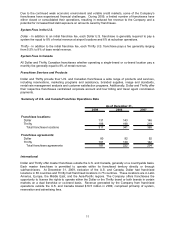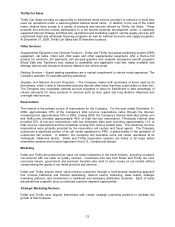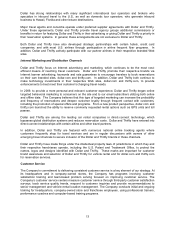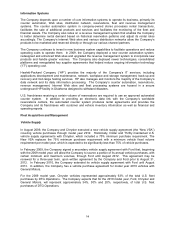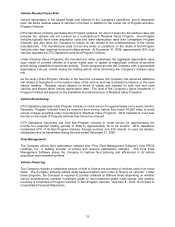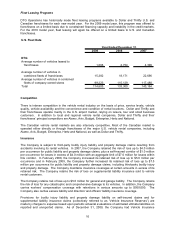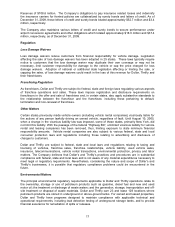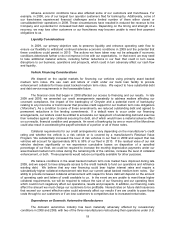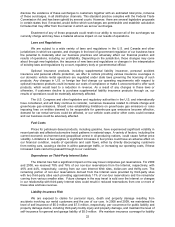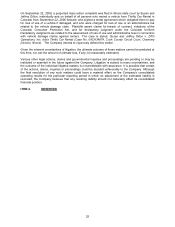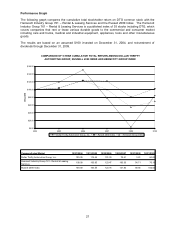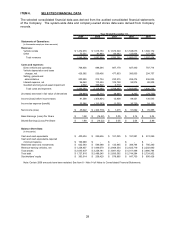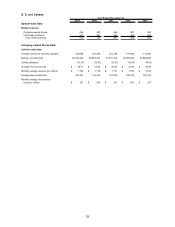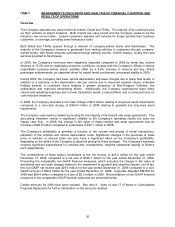Thrifty Car Rental 2009 Annual Report Download - page 22
Download and view the complete annual report
Please find page 22 of the 2009 Thrifty Car Rental annual report below. You can navigate through the pages in the report by either clicking on the pages listed below, or by using the keyword search tool below to find specific information within the annual report.holding costs and results of operations. Throughout 2008, the used car market experienced significant
volatility and an overall decline in residual values, including many types of vehicles in our fleet. While the
market has experienced improving trends during 2009, the strength and duration of further improvement
in 2010 remains uncertain. In the event of renewed pricing pressure in the used car market, our results
could be materially and adversely affected. Operating more risk vehicles could also have a negative
impact on the vehicle utilization and profitability if we are unable or elect not to sell those vehicles in
periods of weaker rental demand.
Like-Kind Exchange Program
We use a like-kind exchange program for our vehicles where we dispose of our vehicles and
acquire replacement vehicles in such a way that we defer the gain on these dispositions for tax purposes.
The use of this like-kind exchange program has allowed us to defer a material amount of federal and
state income taxes beginning in 2002. In order to obtain the benefit of the deferral of the gains on
disposal of our vehicles, we must acquire replacement vehicles within a specified time frame, and must
also maintain or increase the overall size of our fleet comparable to the prior tax year. Our ability to defer
the gains on the disposition of our vehicles under our like-kind exchange program will be affected by the
recent significant downsizing of our fleet. We utilized existing federal net operating loss (“NOL”)
carryforwards to offset the majority of these gains; however, the taxable gains exceeded the available
federal NOL carryforwards and resulted in cash tax payments during 2009 tax year. Projection of the
results of the like-kind exchange process is complex, requires numerous assumptions and is not subject
to precise estimation. Actual results depend upon future sale and purchase transactions extending up to
180 days after year-end and actual results may differ from current projections. Increased cash tax
payments may be incurred in 2010 and beyond, depending on future vehicle purchase and sale
transactions.
Dependence on Air Travel
We get approximately 90% of our rental revenues from airport locations and airport arriving
customers. The number of airline passengers has a significant impact on our business. Mergers and
acquisitions in the airline industry, airline restructuring through bankruptcy, and continued challenging
economic conditions are causing airlines to further reduce flight schedules which could adversely impact
the number of airline passengers. The airline industry has also faced considerable challenges in light of
current global economic conditions and an overall decline in air travel. In 2009, airline enplanements
decreased approximately 5%. A further significant reduction in airline passengers or any event that
significantly disrupts air travel could negatively impact our results.
Concentration in Leisure Destinations
We have a significant presence in key leisure destinations and earn a large portion of our
revenue from these markets. Rental revenue from Florida, Hawaii, California and Texas represented
approximately 56% of our total rental revenue for the year ended December 31, 2009. The severe decline
in consumer spending in recent periods has materially adversely affected leisure travel and can be
expected to continue to do so in the foreseeable future. Reductions in leisure travel resulting from natural
disasters, terrorist acts, or other factors could also have a material adverse impact on our results.
Seasonality
Our business is subject to seasonal variations in customer demand, with the summer vacation
period representing the peak season for vehicle rentals. In 2009, the second and third quarters were
adversely affected by low levels of consumer confidence and spending. Any event that disrupts rental
activity, fleet supply, or industry fleet capacity during these quarters could have a disproportionately
material adverse effect on our liquidity, our cash flows and/or our results of operations in those periods
and for the full year.
Customer Surcharges
In almost every state, we recover various costs associated with the title and registration of our
vehicles and, where permitted, the concession cost imposed by airport authorities or the owners and/or
operators of the premises from which our vehicles are rented. Consistent with industry-wide business
practices, we separately state these additional surcharges in our rental agreements and invoices and
21


